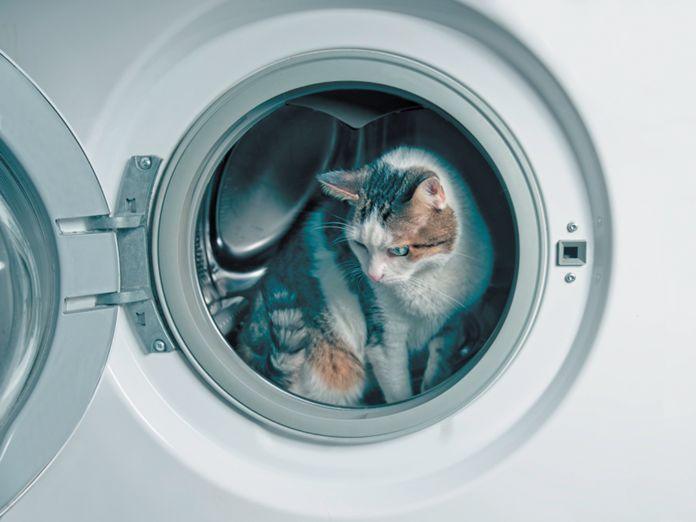There’s a significant silver lining to the injuries that land many cats in emergency rooms. In many cases, the accidents that threaten our pets’ well-being are entirely preventable. Take a look.
Getting hit by a car. We cannot stress enough that no matter how much your cat wants to roam the neighborhood, you should not let him. We’re all for constructing a catio — an enclosed, outdoor space in which he can get some fresh air and perhaps climb around, with high-up perches and other cat comforts. But a cat is not going to look both ways before he crosses.
Letting a cat wander the streets also increases his chances for getting attacked by other animals or getting into fights with them, either of which can result in sometimes life-threatening bite wounds.
Poisonings. Anything with caffeine, onions, garlic, or alcohol should not be left within a cat’s reach, as ingesting these substances can make a feline very ill. Raw egg (say, left over in a bowl within reach for easy licking), other raw foods, and nuts can also lay a cat low. To always stay on the safe side, make a habit of keeping foods for people out of reach of felines. Ditto for human medicines, household cleaners, fabric softeners, fertilizers and pesticides, rodent bait, and plants like ficus and hydrangeas (see aspca.org for common plants poisonous to cats).
Ingestion of string and other foreign objects. While cats can be finicky eaters, they are notorious for picking up and chewing on string, torn-off pieces of a toy, or discarded food wrappers that retain the scent of something enticing. Any of these can cause an intestinal blockage. Don’t leave “extraneous” materials around.
Cozying in clothes dryers. Do not — we repeat — do not leave your clothes dryer door open. Cats can and do die in dryers. As you know, they love to snuggle in warm, enclosed, hidden places, and what fits that description better than an out-of-the-way spot in your laundry room or basement? A cat will often jump in when there are already warm clothes inside. Sometimes people decide to throw in more clothes before removing the ones that are already there. The machine starts up again, and tragedy results.
Pet-on-pet aggression. Most of the time pets living under the same roof make their peace even if they don’t like each other, but a “family” that gets along can still fight sometimes. Be aware that cat bites have the potential to cause more harm than dog bites. Cats have long, pointed teeth that create puncture wounds, whereas dog bites tend to be tears. The cat puncture may be small, but it can go deeper than a dog bite, enhancing the opportunity for bacteria to penetrate deeper into the body and cause infections. In turn, abscesses can form. To ratchet down the chance of cats fighting in your home, make sure each one has enough of everything: food, litter boxes, hiding spaces, perches to enjoy the warm sun on their backs, access to you, etc.
Heat stroke. To cool down when they are overheated, cats rely on panting. It’s much less efficient than the sweating we do to let off excess heat and therefore leaves them prone to heat stroke. Overweight cats are at particular risk, so you want to make sure your cat is on a meal plan that ensures proper weight management and helps him maintain ideal body condition. Also, at this time of year, when the hot weather is ramping up, make sure there are shady spots in the house to help him stay cool. And leave out fresh, cool water, changing it more frequently than you might in the winter.
Teeth fractures. This happens more commonly than you may think. And it might cause a lot of pain. It can happen if your cat bites down on objects he shouldn’t, like food bones or a toy that is not meant for him. So as with poisonous foods and other things, keep such temptations out of reach. Some cats also damage their teeth pushing against loose window screens when the window is open, so you need to make sure your screens are securely in place.
Note: Sometimes fractures can occur below the gum line and are not visible. If your cat is having trouble eating, chewing only on one side of his mouth, or drooling, take him to the veterinarian.




